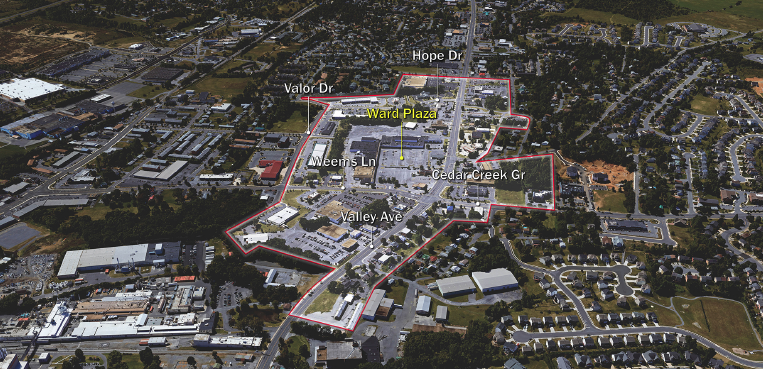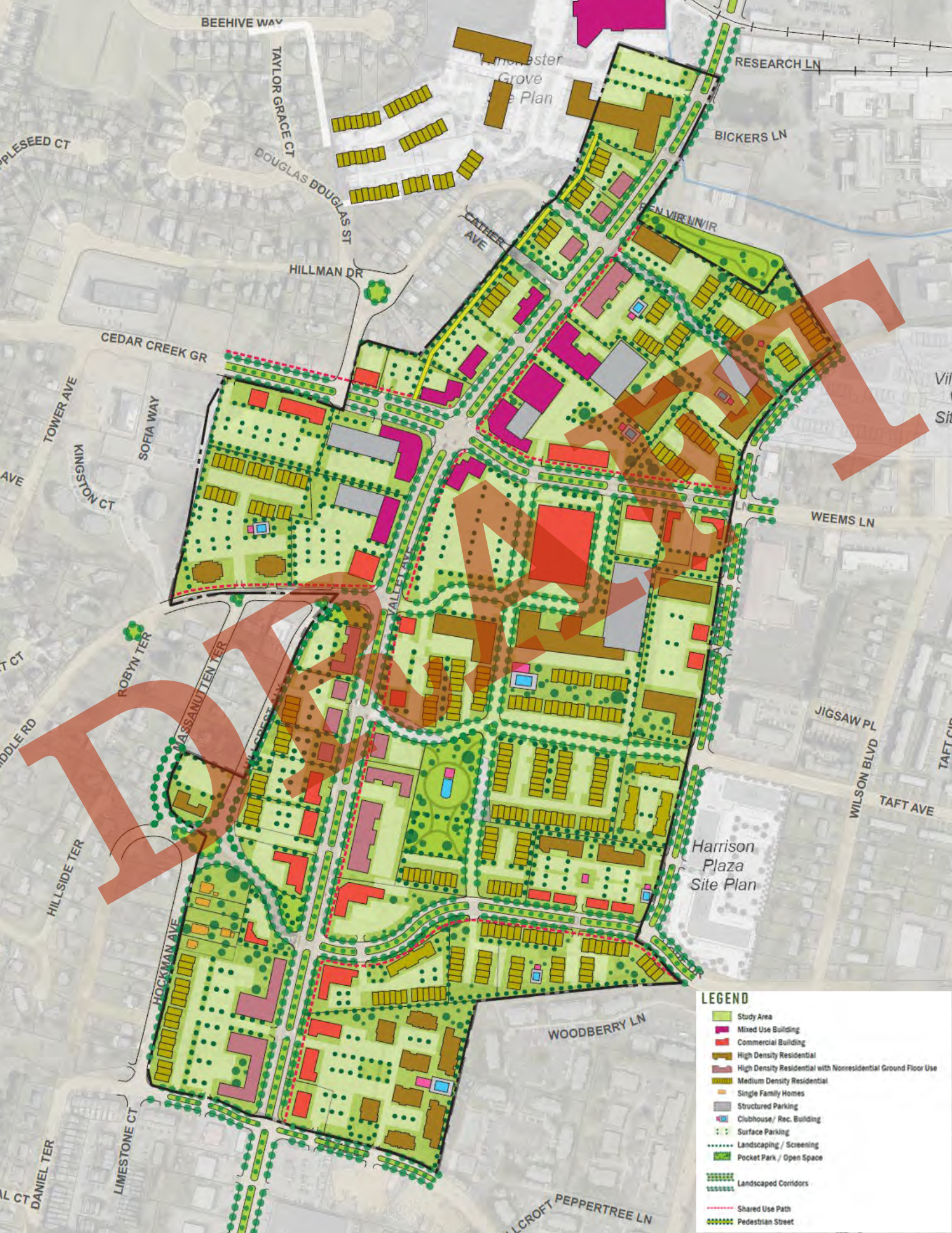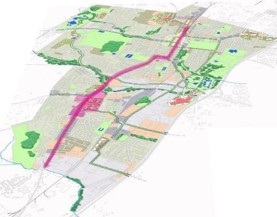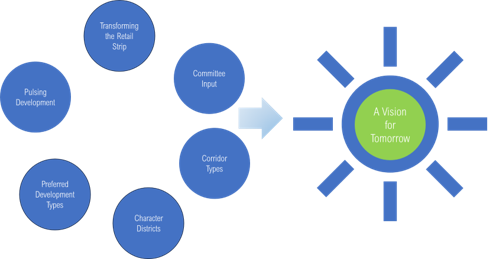Neighborhood Design Districts

The City is embarking on an effort to redevelop four strategically-chosen areas of Winchester through the Neighborhood Design Districts (NDD) process! This initiative will guide the City's effort to proactively revitalize neighborhoods by incorporating a mix of residences, businesses, and open spaces that promote residents' well-being. A Neighborhood Design District is a way of "pre-planning" a potential development area and adjacent parcels into a cohesive district. The district should incorporate design guidelines that reflect the intent of the community. These design elements can help establish each area as a distinct place and help developers plan their projects.
Rather than hoping that developers deliver quality PUDs that reflect community need, a district proactively rezones parcels with the Comprehensive Plan and market demands in mind.
Although the current Comprehensive and Strategic Plans identify areas where the community would like redevelopment to occur, we only sit back and wait for the right PUDs to come along. We should back up our intent with the proper zoning. Whether you are a resident or a developer you want one thing when it comes to growth; certainty. Residents want to know in advance what will go in a specific place and developers want to know exactly what they can build. District plans do that.
In order to keep up with this redevelopment, infrastructure should be proactively planned and funded more efficiently. The District plans will identify not only what public improvements might be needed but a mechanism for funding them over the long term.
Four areas of the City are currently classified as Neighborhood Design Districts: Along Fairmont Avenue in Ward 1, along Berryville Avenue in Ward 2, along South Pleasant Valley Road in Ward 3, along Valley Avenue, Cedar Creek Grade and Weems Lane in Ward 4.
Project Update
- City of Winchester Publicly Sponsored Rezoning (Cedar Valley and Cider Hill)
- Winchester Zoning Ordinance (14.3 Neighborhood Design District Approved by City Council on March 2025)
- Amendment to the Winchester Comprehensive Plan
Explorer the Districts
Cedar Valley Neighborhood Design District
The Ward 4 Neighborhood Design District, The Cedar Valley Neighborhood, was named based on the choices and input of Ward 4 residents. Check out the map below to familiarize yourself with the area.
RZ-25-1 Cedar Valley Rezoning Exhibit(PDF, 3MB)
Cedar Valley Rezoning Parcel List(PDF, 147KB)
NDD Zoning Council Approved Version 3-11-2025(PDF, 397KB)
Cedar Valley NDD Report(PDF, 12MB)
Share Your Thoughts on the Cedar Valley District

Future Vision
The future vision for the Cedar Valley Area is a transformation. The vision includes both public improvements and private redevelopment of sites over the long term. Cedar Valley in the future is intended to be not just a shopping strip but a series of walkable neighborhoods with housing, shopping, restaurants and community amenities and gathering spaces. It should be noted that this is a long term vision and may take a couple of decades to be realized and will require that both public and private investment work together towards this shared vision for the improvement of the area in the years to come.

Transforming the Retail Strip

A Vision for Tomorrow

"Pulsing" the Development

Advisory Committee
The NDD process is broken down into six phases and is guided by two groups. The first is the Support Team made up of City Staff, market consultants, and zoning and design consultants. The second group is the NDD Advisory Committee made up of four members of the public, two city councilors, one planning commissioner, and one EDA board member.

The Planning Process
- Phase 1 – Orientation, District Boundary Review, Overview of Major Parcels, District Identity
- Phase 2 – Design Guidelines, District Economics and Market, Amenities and Infrastructure
- Phase 3 – Design Concepts, Parcel Specific Plans, Recommendations, Draft TIF List and Design Guidelines
- Phase 4 – Review of NDD Plan/Zoning, TIF Review, Revisions, Public Hearings, Recommendations
- Phase 5 – Plan Review/Feedback, TIF Review/Feedback, Revisions, Recommendations
- Phase 6 – Plan Review/Feedback, TIF Review/Feedback, Public Hearings, Approval or Rejection
Tax Increment Financing (TIF)
TIFs fund infrastructure without increasing taxes on current residents. The increasing property values associated with new development cover the costs. TIFs allow the City to ensure infrastructure needed to support new development is built in advance or at the time of development rather than later. TIF districts have been used with success in Virginia since 1988.
Please continue to check back on this page for updates on the NDD initiative the districts are formalized and the collaborative design process begins! The first NDD process to get underway is the Valley Avenue and Weems Lane District, followed by the Fairmont District.